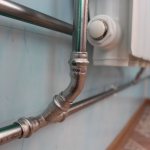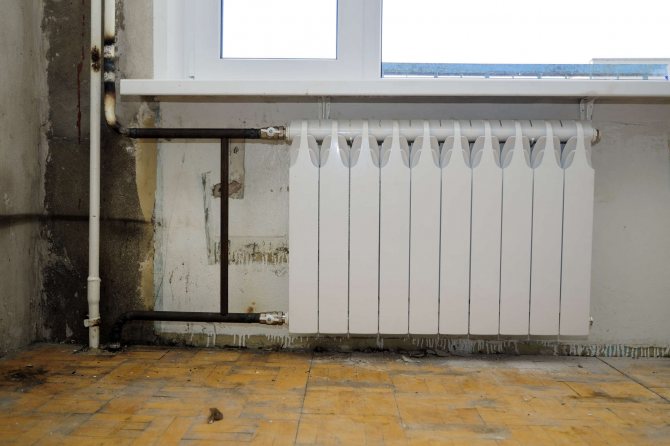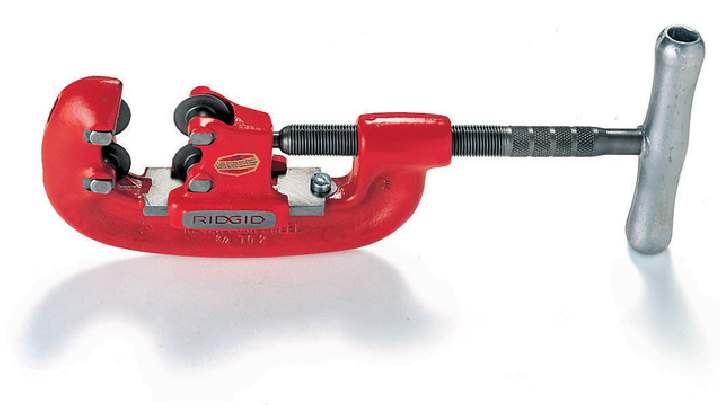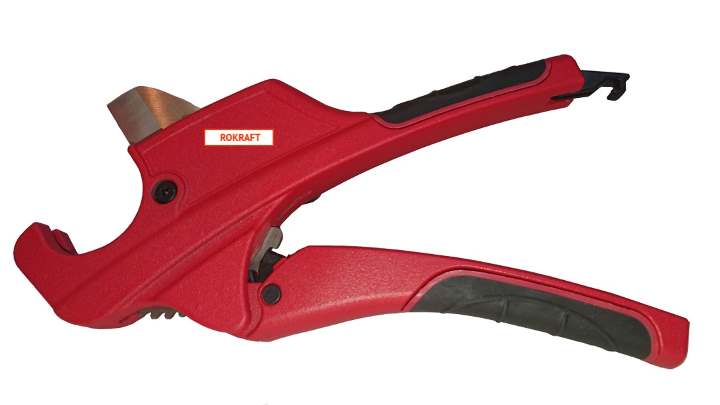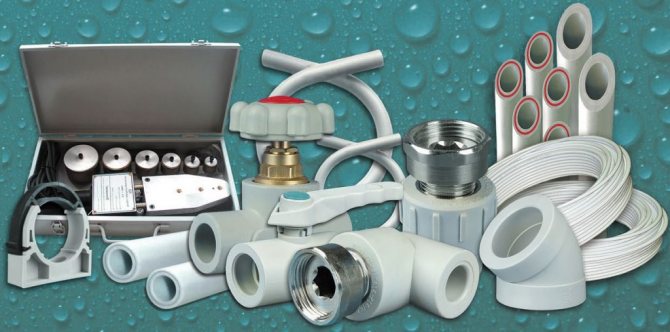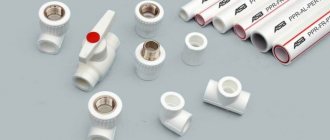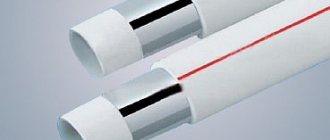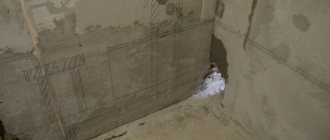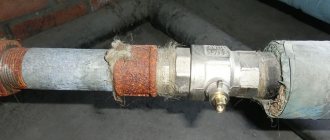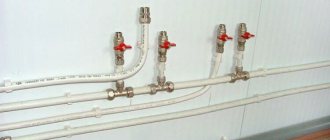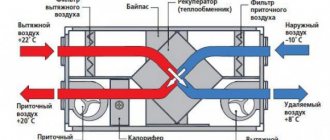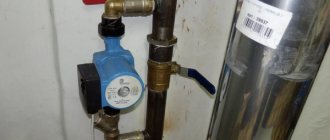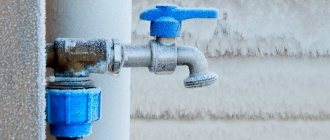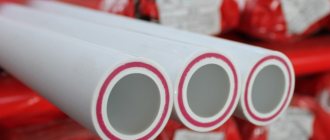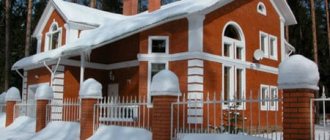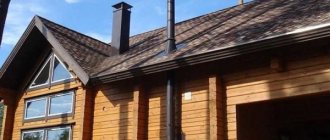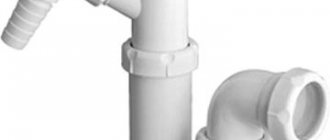Positive characteristics of PP pipes
Pipe products made from polypropylene have a number of advantages:
- long service life, which is at least 25 years;
- resistance to aggressive environmental influences;
- a wide range of connecting fittings and other accessories;
- absence of condensate and various deposits on the inner and outer surfaces;
- insignificant weight of products;
- resistance to corrosive processes;
- ease of installation work;
- sufficient strength;
- low noise level.
The maximum permissible operating temperature of a liquid moving through polypropylene pipelines is considered to be 90ᵒC (the limitation applies to products of brands 20 and 21). In the case of arranging a line for supplying cold liquid, the temperature of which most often does not exceed 20 degrees, pipes of grades 11 to 16 are laid.
Heating installation with metal pipes
Installation of heating with metal pipes is a laborious process. The smallest errors can affect the service life and make the product unusable. At the initial stage, it is necessary to draw up a competent project and choose a material. You should decide on the location of the elements of the heating system. First you need to prepare the necessary tools and materials. Self-installation of heating with metal pipes is a rather painstaking task. The pipes must be connected by welding or a soldering machine. Also, a threaded connection method can be used, but it is less reliable. Since the work process requires special equipment and technical knowledge, you should contact a qualified technician.
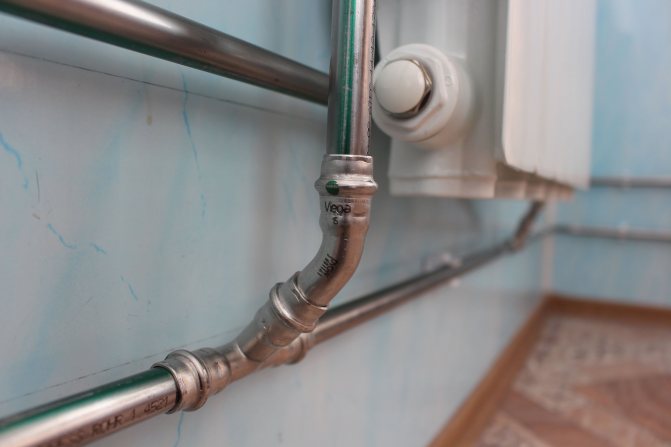
The main features of installation work
Polypropylene pipes are laid using fittings, both threaded and non-threaded. Products with thread are:
- detachable;
- one-piece.
The choice of the method of installation work is primarily influenced by the conditions in which the pipeline will be operated. All components made of polypropylene must be protected from fire.
When it is necessary to embed a water meter or a storage tank into the system, split-type threaded products are used. In addition, the one-piece connection is used only when working with flexible hoses. It is forbidden to use dirty or deformed elements. It is also not allowed to self-thread.
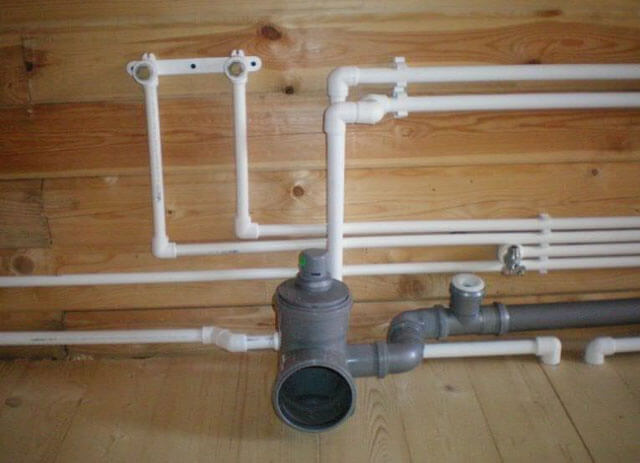

If you have to connect flat sections or equip the transition of a section of the pipeline to a diameter of a different size, use couplings. Special elbows are used for turns, and tees are used to create branches in the system. Bending of pipes is not allowed.
After all the necessary information has been studied, they proceed to the installation of polypropylene pipes, which is carried out in several stages (in more detail: "Types, properties, installation of propylene pipes with your own hands").
How to choose pipes for installing a heating system
Any building designed for a year-round stay of a person in it has a heating system (CO), for the installation of which pipes are needed. Today the market offers the widest range of pipes for heating systems made of various materials, each of which has its own advantages and disadvantages.
Steel heating pipes
Most of the apartments and private houses built in the last century have just such steel pipes, for the manufacture of which high quality carbon steel is used.
The indisputable advantages of steel heating pipes can be considered:
• Their resistance to pressure surges in CO, possible water hammer, high pressure; • Long terms of operation; • Low value of temperature coefficient of linear expansion. The material practically does not change its geometric dimensions when heated, when used in CO; • Such pipes are relatively cheap.
The main disadvantages of steel pipes are:
• Corrosion; • The emergence of stray currents that negatively affect the inner surfaces of such pipes; • Reduced throughput due to rapid clogging due to internal deposits; • Significant cost of installation requiring special tools and skills.
Corrugated heating pipes
It is made of stainless steel and appeared on the markets relatively recently. The main convenience is the ease of installation in confined spaces, because such pipes bend easily. They are quickly installed due to the use of a fitting-pipe connection.
They have proven themselves well when arranging CO in new buildings and when replacing pipelines in old buildings.
They allow high quality installation of routes of complex configuration with a minimum of connections. Demonstrate the necessary resistance to significant internal pressure and hold water shocks up to 6 atm.
The advantages of this type of pipe include:
• Terms of operation are practically unlimited, because the material is not subject to corrosion; • The seals used in the joints are designed for a 30-year service life; • Possesses high resistance to mechanical damage and water hammer; • Easily bends in any direction without changing, at the same time, the inner diameter; • Withstands defrosting; • On the inner walls there is no scale and precipitation with any quality of the heat carrier; • Allowed to be laid in concrete screeds and inside walls (under a layer of plaster); • Virtually no linear thermal expansion (both + and -); • Significant heat transfer makes pipes the most preferred material for the manufacture of warm floors and walls; • Can be used as a heating device; • Easy to install; • Not affected by pathogenic flora, fauna and rodents; • Is universal for laying pipelines for any purpose. Including CO installation.
Copper heating pipes
An excellent material for the installation of heating systems with increased corrosion resistance.
Thin walls allow reducing the outer diameters of the pipe without reducing the inner ones. Do not overgrow with deposits from the inside. They have increased flexibility, which allows the use of such pipes for arranging a warm floor.
Today the market offers two types of copper pipes:
• Annealed, perfectly deformed and delivered to the end consumer in coils; • Unannealed ones are offered by dimensional cuts and are practically not used in CRM.
When choosing such pipes for the installation of a heating system, certain rules must be observed. It can only be used with homogeneous materials (copper-based alloys). Otherwise, it is required:
• Avoid joints between copper and material such as unalloyed steel. such contact activates corrosive processes. Taking into account the direction of movement of the coolant, steel pipes should be used in areas preceding copper; • In case of hidden laying of copper pipes under plaster, they must first be wrapped along the entire length with polyethylene film to prevent temperature deformations.
Pipes and fittings made of copper are comparable in terms of service life to those for which the building itself is designed. But their prohibitively high price translates them into a section of extremely rarely demanded.
Polypropylene heating pipes
Today these pipes are the leader in sales in Russia for the purpose of equipping heating systems, both in newly built and reconstructed (undergoing repairs) facilities for any purpose (first of all, housing). In this case, we are talking exclusively about reinforced pipes.
The advantages of polypropylene heating pipes are:
• Long terms of use (up to 50 years); • Lack of deposits and scale, narrowing the internal flow area; • The material is not subject to corrosion; • Possesses high chemical resistance; • Pipes are classified as low-noise; • All pipeline connections are monolithic, which eliminates leaks and allows them to be laid under the floor or in walls; • Easy installation, for which a special "soldering iron" is used; • The material is impermeable to oxygen, which protects metal elements from corrosion; • Have acceptable mechanical strength; • Resistant to defrosting; • Environmentally friendly; • Much cheaper than metal pipes (including corrugated pipes).
The disadvantages of polypropylene heating include:
• The impossibility of using unreinforced pipes for the installation of the heating system; • Prohibition of laying in premises classified as fire hazardous; • The quality of the pipe significantly depends on its manufacturer, which makes increased demands on the selection.
But, the vast majority of pipes on the market are in this class. It is a high quality product. The use of PP pipes, when installing CO, imposes restrictions on the temperature of the coolant, which should not rise in the system above + 95 °, and for some brands + 65 °. Average workers for this type of pipes are considered to be a pressure of 7.5 atm and a temperature of + 75 °. In this case, manufacturers guarantee the operation of their products for a quarter of a century.
Reinforcement of pipes is carried out with aluminum foil or fiberglass. For them, the operating temperature is + 95 °. For a short period, they are able to keep + 110 °.
Heating pipes made of metal-plastic
Reinforced-plastic pipes have a wide range of advantages, and no fewer disadvantages. Therefore, when buying such pipes, you should definitely decide what, in your particular case, will outweigh.
Advantages of using metal-plastic pipes in the heating system:
• Do not corrode; • There are no internal deposits; • Long terms of operation; • Impermeable to oxygen; • Significant footage (in the bay the length of the pipe can be from 50 to 500 m), which makes it possible to mount a large section without connections; • Convenient for use on objects with complex geometry (easily bend and have high ductility), because they retain their shape; • When heated, they lengthen very slightly.
The five-layer structure of such pipes makes them quite reliable. Connecting fittings have a significant impact on the quality of the heating system assembled from such pipes, which are divided into:
• Press fittings (one-piece); • Compression (detachable conditionally); • Collet (detachable).
Press fittings are mounted using special equipment, which is very expensive.
Cons of using metal-plastic pipes in the heating system:
• Do not tolerate direct ultraviolet radiation; • Poorly tolerate mechanical loads and thermal effects; • Fittings have smaller internal diameters than the pipes themselves, therefore, if the coolant is of poor quality, they quickly become clogged (overgrown) with deposits; • Difficult installation (there is a possibility of "pinching" the nut, which leads to a notch in the pipe).
XLPE pipes
This material is more commonly referred to as PEX pipe. Possesses significant resistance to high temperatures and substantial strength. For the installation of CO, it is practically not used due to the high cost of both the pipe and fittings itself, and the equipment for its installation.
Output
The best option for installing CO in a private house or in your own apartment, in terms of price ratio, ease of installation and quality, today, of course, are reinforced polypropylene pipes. Therefore, the technology of installing the heating system will be considered in detail using the example of the material mentioned.
To the table of contents
Mainline project development
Always before starting the installation, a project of the future system is drawn up. Ergonomics is considered the main criterion - for this reason, it is necessary that the number of turns of pipelines and connecting elements in the line be minimized.
If you plan to arrange a heat supply system, it is important to correctly draw up a project in which the location of the following elements should be accurately indicated:
- heating equipment;
- fasteners;
- various adapters and couplings;
- corners.
The heat supply line is connected to the batteries from the side or bottom in one of two ways - one-pipe or two-pipe.
When developing a project, it is necessary to take into account the likelihood of thermal expansion of the pipe material, which in this case is polypropylene.
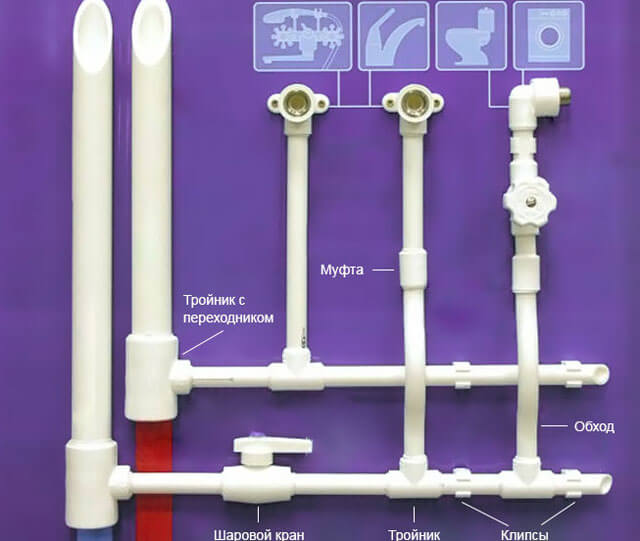

If necessary, the laying of water distribution, the pipeline is connected to centralized communications. When designing a water supply, it is taken into account that such plumbing fixtures as toilets, heating units, sinks, etc. are to be connected.
In practice, one of two ways of arranging the wiring is used:
- Open option... Pipes installed horizontally are placed above the level of the floor covering, and vertical products - only in the corners. Thanks to this installation, you can make the pipeline less noticeable.
- Closed option... This installation method is difficult to implement, as this will require preliminary accurate calculations. Pipes embedded in walls must be solid, and unhindered access must be provided to each joint.
The distribution of the water supply network is of three types:
- consistent. This budget approach is easy to implement;
- collector - water supply is organized using special equipment - collector;
- with pass-through sockets - it is rarely used.
Installation of heating with iron pipes
Installation of heating with iron pipes is characterized by a high degree of reliability. They are able to withstand large temperature changes.
The advantages of using an iron pipe system are as follows:
- High level of strength;
- Rigidity that allows you to withstand the slopes of the highway.
The disadvantages of iron pipes are as follows:
- Expensive;
- Complex and time-consuming installation;
- Susceptibility to corrosive processes.
Install pipes after studying the wiring system. You need to know exactly where the radiator, additional equipment and boiler are installed. It is necessary to select pipes with a maximum diameter, which should correspond to the diameter of the outlet or the boiler branch pipe. After that, you need to decide on the heating wiring diagram. For iron pipes, a two-pipe scheme is usually chosen. This scheme has an average value in terms of material consumption and allows for uniform heating of radiators.
Heating pipes can be connected in the following ways:
- Muff;
- Welding;
- Flanged;
- Carved;
- Welding.
The most difficult and at the same time widespread method is gas welding. At the same time, manual electric arc welding can be successfully used. Gas welding is ideal for creating a pipe bend and taking the required shape. Joining iron heating pipes using welding requires a high level of qualifications from the contractor. This type of work should be entrusted to a specialist.
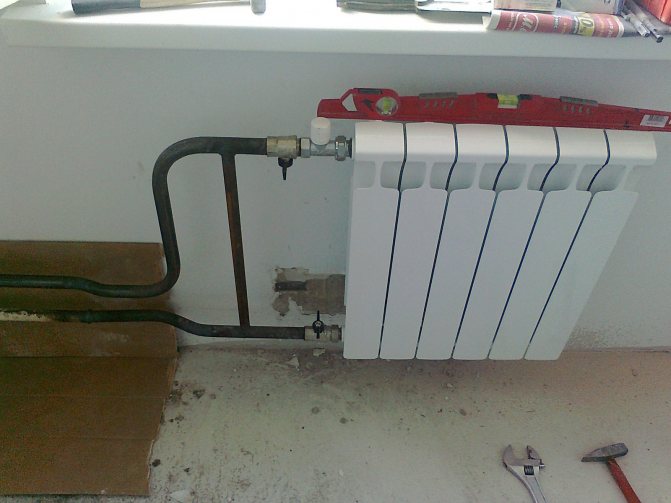

When doing this type of work on your own, you should adhere to a number of rules:
- Preparation of iron pipes and connecting surfaces should be carried out;
- Purify and degrease;
- Edges must be protected from inside and outside;
- The joints should be at an angle of 60 degrees;
- The weld layer should be thoroughly cleaned from the formed slag.
A minimum of two welding layers are used to connect the pipes. The number of layers depends on the thickness of the pipes used. The first welding coat must be applied carefully. The edges must be completely melted and the pipe elements must remain in position. It is possible to apply the second layer, only to remove the slag from the first layer.
Threaded connections can be used to connect various devices and during the installation of the main line. To make this connection, a variety of ready-made elements are available. Threaded connections should be sealed using sealant and tow.
Using tow is the most reliable option, which has been proven by experience and time. You can also use quick-release couplings. They provide easy fixation of all connected elements. Also, threaded connections can be made using flanges and couplings. After installing the pipes, you can fill them with water and check the tightness of the joints. If there are leaks, appropriate measures must be taken to eliminate them. If small leaks are found, they can be repaired with epoxy.
Welding PP pipes
To start this stage, you must have at your disposal an electric jigsaw for cutting polyethylene and equipment designed for welding.
Before starting work on the device, you need to put on nozzles (sleeves) of a certain diameter. Then, using the thermostat, set the desired temperature, which should be about 260 - 265 degrees, and wait until the device warms up. There is a step-by-step instruction from the manufacturer of welding equipment that describes in detail all the nuances, including the warm-up time.
Thermal elongation for polypropylene pipes
Expansion joints are created along a long pipeline to ensure safe thermal elongation. They can have various designs:
- L-shaped;
- u-shaped;
- the loop;
- snake;
Thermal elongation calculation uses standard coefficient of linear expansion and the difference between the planned temperature of the heating medium during operation of the system and the temperature of the pipes during installation. For example, the installation of heating communication will be carried out at t -20-22 ° C, the water in the system during operation can reach 95-100 ° C. The difference is about 80 °. Consequently, each meter of unreinforced pipe increases by 1.2 cm (coefficient 0.15 × 80), reinforced products - by 0.24 cm (coefficient 0.03 × 80). Taking into account the result obtained in the design allows you to create condition structures for free lengthening or shortening during operation, excluding overvoltage, in seams, joints. When creating a "warm floor" system, the temperature difference will be about 35 ° C.
When choosing the diameter of pipes to create a system, it should be borne in mind that the inner surface of polypropylene products absolutely smooth, does not create additional resistance. Therefore, pipes made of this material can have a smaller diameter than steel pipes, which saves the cost of building the system.
How to make a welding machine yourself
Since a good welding device is not cheap, it would be better to rent it or make it yourself.
When the choice is made in favor of the second option, then you need to prepare in advance:
- electric drill;
- nozzle (sleeve) of the required diameter;
- outdated iron;
- washer and bolt for him;
- thermal paste for computers.
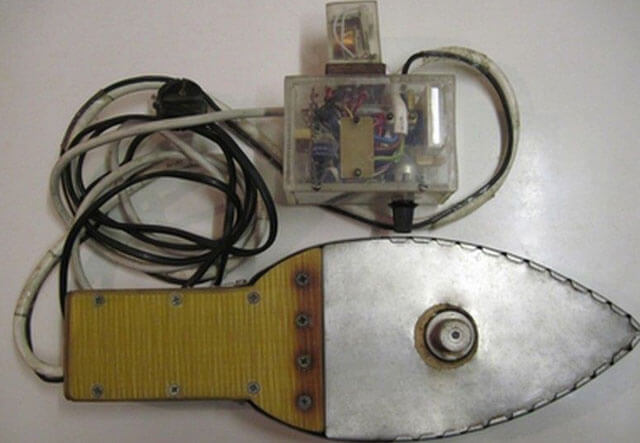

The sequence of actions will be as follows:
- To increase the degree of heat transfer, the sole of the old iron is treated with paste, after which you need to fix the Teflon sleeve. Its position is determined in advance - they have a wide part towards the bottom or towards the top.
- Cut the nose off the iron so that it is more convenient to work with it in the immediate vicinity of the walls.
- Heat the ironing unit until it switches off again.
- The presence of a thermal sensor on the iron allows you to more accurately determine to what temperature the unit has heated up. There is also an easier method to find out the degree of heating of the device using lead. The fact is that this metal begins to melt at 230 degrees, which almost coincides with the temperature required to perform welding.
The subsequent steps for soldering are similar to the assembly described above.
Soldering iron
This device has a special stand on which its sleeves reach a certain temperature - 260 ºС. It is this temperature that is most optimal for welding polypropylene. By the way, the sleeve coating has a Teflon coating, which prevents the plastic from sticking to the heated elements of the apparatus.
Pipes should be heated to a certain depth. Depending on the conditions and technical characteristics of the pipes, the retention period of the plastic on the sleeves ranges from 5 to 15 seconds. The heated plastic, thanks to diffusion, is subsequently "forever" connected at the junction with the second part. For training, you will definitely need rejected or unnecessary material leftovers.
The fact is that if you overexpose the plastic in the device, then the material will lose strength and receive irreversible deformation, which will not make it possible to make a perfect connection. Conversely, parts that are not fully warmed up may subsequently leak when connected.
When stringing pipes onto a sleeve and a drone, do not try to strain unnecessary efforts - the polypropylene pipe should naturally enter the hot nozzles. With excessive application of forces, you will not get welding, but porridge from polymer parts.
So, after warming up the handheld welding machine, fit two pipe elements onto the drone and sleeve. After a few seconds, remove the parts from the device and squeeze firmly together. The heating time of the plastic depends on the pipe diameter and wall thickness. The table shows data for individual cases of adhesion:
| Pipe diameter, mm | 16 | 20 | 25 | 32 | 40 | 50 | 75 | 110 |
| Heating time, sec. | 5 | 5 | 7 | 8 | 12 | 18 | 30 | 50 |
| Permutation time, sec. | 4 | 4 | 4 | 6 | 6 | 6 | 8 | 10 |
| Fixation time, sec. | 6 | 6 | 10 | 10 | 20 | 20 | 30 | 50 |
| Full cooling time, min. | 2 | 2 | 2 | 4 | 4 | 4 | 6 | 8 |
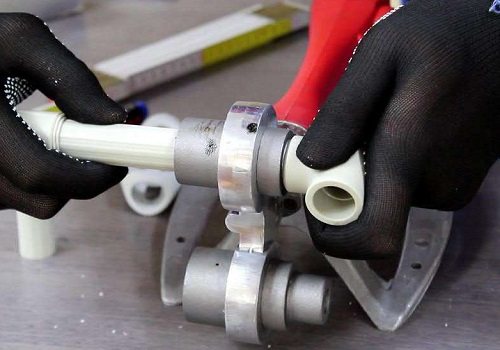

Pipe brazing process
Installation of a polypropylene pipeline
To create a highway, you will need:
- PP pipes;
- plastic clamps;
- threaded fittings;
- couplings and tees;
- detachable connecting elements;
- bends and adapters;
- ball valves; stubs.
First, the main elements of the system are installed, which include plumbing fixtures, radiators, heating units, etc. On the basis of the project, the places for laying the highway are marked. Installation of polypropylene pipes is carried out using couplings. If necessary, collect hard-to-reach sections of the highway - this is done separately.
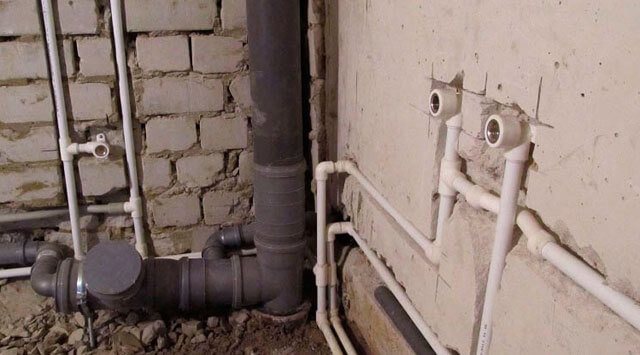

When laying communications for the construction of heat supply or hot water supply, the coefficient of thermal expansion is taken into account. In order to compensate for it, it is recommended to use movable type fittings.
When the installation of PP pipes for laying a closed pipeline is carried out, the walls are first grooved, for which a groove is made in certain places, the width of which is equal to two pipe diameters. It is possible to fill the line with liquid only one hour after the completion of installation work, and hydraulic tests are carried out after a day.
Installation of heating pipelines from steel pipes
Installation of heating pipelines from steel pipes can be done in two main ways: welding or twisting with threading. Regardless of the method chosen, all the risers should initially be laid and the pipeline laid. The welding process places special demands on the quality of the seam. It should have an even appearance without sagging and cracks. The holes for the nozzles are made using milling, punching or drilling. The installation of a pipeline from steel pipes can be carried out with a fairly modest budget. However, such products can be subject to corrosive processes. It should be borne in mind that the features of materials and assembly rules directly affect the service life of the pipeline. Therefore, you should contact a qualified specialist with experience in this area. If you have the skills and certain tools, you can carry out high-quality installation in a short time.
Arrangement of a sewerage system made of polypropylene pipes
When creating a sewage system, sewer PP pipes are often used. The process of laying them has features that should be taken into account.
A careful study of the rules and instructions for installing polypropylene pipes will help to equip a sewer system in your own home with your own hands:
- The pipeline is laid under a slight, approximately 3 cm, slope towards the location of the drain.
- When the pipes are in a cold room, they should be additionally insulated with mineral wool.
- It is not allowed to make sharp turns of communications, or rather, at right angles. Instead of them, half-taps are used.
- An obligatory element of the sewage system is a fan ventilation structure, which prevents the penetration of unpleasant odors into the premises.
- The toilet must be connected after installing the sink, otherwise the breakdown of the water seal cannot be avoided.
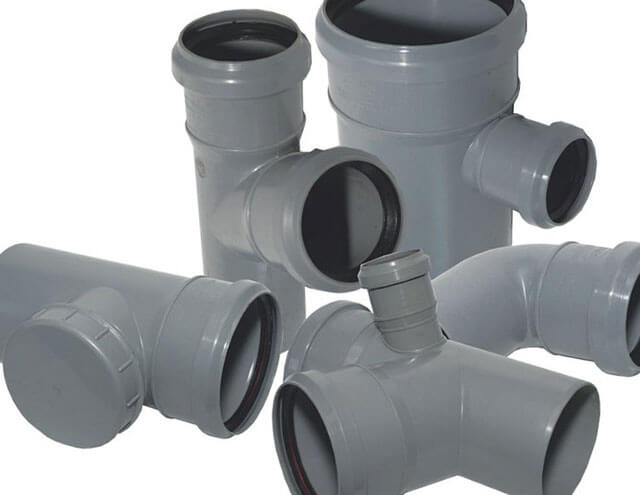

The external sewage line is laid in a certain sequence, taking into account some of the nuances:
- The diameter of PP pipes is determined, which depends on the number of people who live in the household.
- From the sewer runoff, they dig a trench in the direction of a septic tank or a cesspool, observing a slope, the size of which depends on the depth of soil freezing, or the pipeline is insulated.
- A sandy "pillow" is laid on the bottom, its minimum thickness should be 20 centimeters.
- A pipeline is laid, preventing sagging of its sections - otherwise, the joints will soon collapse.
During the installation of the system, the seams do not need to be sealed, since there are rubber seals in the polypropylene pipes for outdoor installation.
Self-installation of the sewer main will help significantly save money, but only on condition that it is correctly executed.
Types of wiring
After choosing the pipe material, it is necessary to think over the wiring diagram of the heating system. Depending on the area of the heated premises, the layout of the building, the type of coolant and the energy source, the engineer must select one or another pipe layout. Experts distinguish between several ways to install pipes in the house.
We recommend that you familiarize yourself with: Features of the use and installation of metal-plastic pipes
Top water filling system (gravity)
In such a system, the heating boiler is located at the lowest point of the object, and the circulation of water is based on natural physical laws (expansion during heating, contraction during cooling). As it heats up, the water increases in volume and flows from the boiler through the pipes upward, filling the risers and heating radiators. Circulating in a closed loop, the cooled liquid returns to the boiler, where it heats up again.
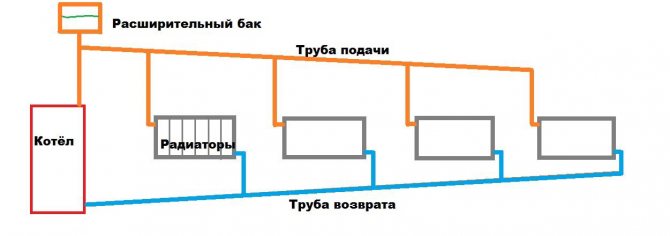

The top water filling system is the simplest and most economical in terms of installation and operation. The advantages of this layout include:
- independence from electricity;
- no need to install a circulation pump.
Top-water distribution is suitable for a relatively small area of heated premises. The disadvantages of a gravity system include low efficiency and the need to increase the power of boiler equipment. In top filling systems, abnormal situations often occur - airing, boiling water - which further reduces the efficiency of heating. When operating the system in rooms farther from the boiler, the temperature of the riser and radiators is usually lower than in other areas.
Bottom water filling system (forced)
In such systems, the circulation of the coolant is carried out due to the operation of a special pump, which is installed at the outlet of the collector connected to the boiler. Thanks to the circulation pump, the performance of the system is significantly higher compared to gravity heating. Other advantages of this type of wiring are the ability to use thinner plastic pipes and install the pipeline under the floor.
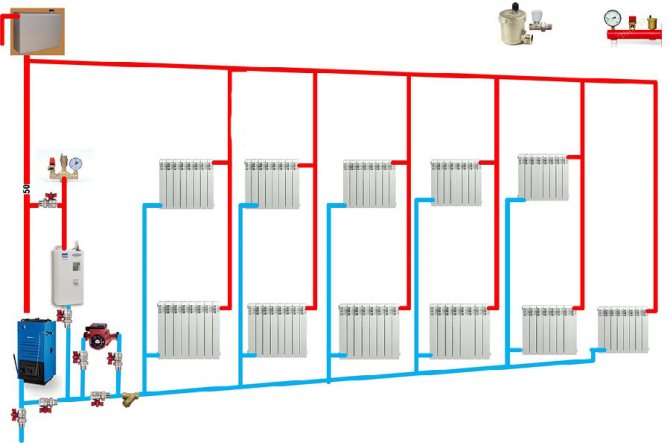

The only downside to bottom wiring is the dependence on electricity. In the event of an unscheduled power outage in the house, the circulation pump stops and the system stops functioning.
There is another classification of heating system wiring:
- one-pipe - the installation of the riser is carried out on the basis of one pipe, which leaves the boiler and is connected to one radiator, and from it to the next, and so on;
- tee - several radiators are connected to a common riser;
- collector - based on the supply and return pipelines, which are connected to the collectors, and radiators are connected to them using separate pipes.
Important! One-pipe wiring is suitable for small (up to 150 m2) residential buildings. Collector wiring is most often installed in residential buildings and cottages on two or more floors with several rooms, a kitchen, a bathroom, and technical rooms.
Before planning the installation of heating pipes, you also need to take care of the purchase of small engineering equipment. It includes all kinds of valves and plugs, steam traps, control and metering devices (manometers, thermometers).
We recommend that you familiarize yourself with: How does an electromagnetic (solenoid) valve work - rules for selection and installation
Heating wiring
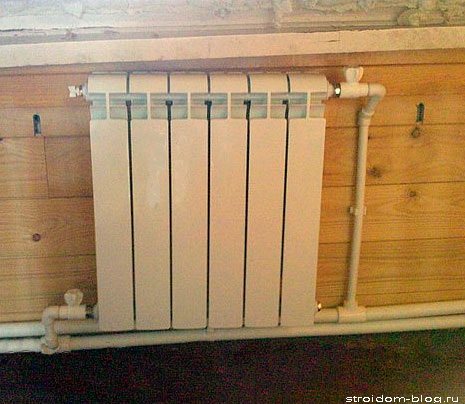

Heating installation
As in the case of plumbing, before starting the installation of a polypropylene-based heating system, everything must be carefully planned on paper.
The differences lie in the complexity of the calculations, which are best entrusted to heating specialists.
The choice of the type to be used depends on the type of heating system. If this is a low-temperature system (up to 65C), then for its arrangement it is quite possible to do with the PN20 brand. For high-temperature circuits (up to 95C), they are used with reinforcement.
Video - instructions for installation and soldering from the master:
To supply the coolant to the radiators, most often 20 mm is quite enough. A wider pipeline can be installed, but this will greatly increase the cost of the project. The exceptions are cases when the length is more than 30 m. Here the diameter is exactly 32 mm.
Fitting
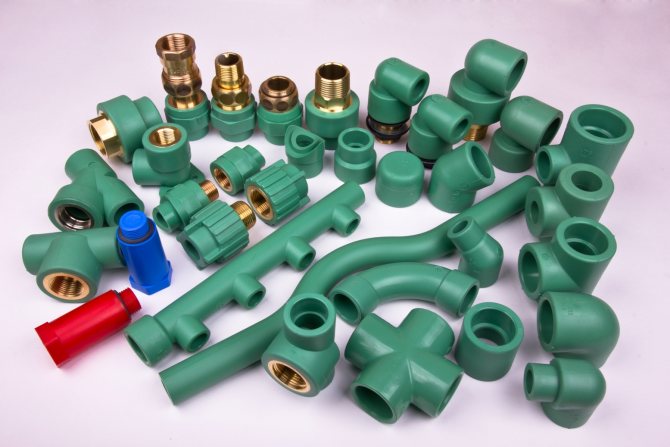

The connection of polypropylene pipes into a single system is carried out using fittings.
Their purpose is sealing joints, arranging bends and branches, as well as creating transitions to pipes of a different diameter or from other materials.
There are the following types of fittings: transitions-nozzles, plugs, crosses, tees, couplings, plugs, bends, corners, caps.
The purpose of the bends and crosses is to distribute the flow in several directions. Corners allow you to change direction. With the help of couplings, pipes of the same diameter are connected, and with the help of branch pipes, different ones.A variety of fittings and adapters are used to connect to pipelines of a different type.
A feature of fittings for polypropylene pipes is the material of manufacture itself and the installation technology. Polypropylene can only be installed once, so all fittings are non-removable.

